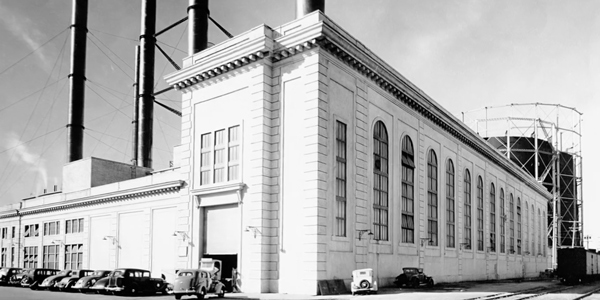By Jason Fordney
Pacific Gas & Electric is requesting proposals for the development of up to 45 MW of “clean energy” resources including at least 10 MW of energy storage, as the centerpiece of its plans to replace the aging Dynegy Oakland jet fuel-fired power plant.
The utility said it will open a two-month request for offers process in spring, inviting “innovative and competitive solutions for the portfolio.” It hopes to bring the new mix of resources online in mid-2022; the procurement total will depend on the exact resource mix, the company said.
The 165-MW Dynegy plant currently operates under a CAISO reliability-must-run contract to meet local reliability needs.
CAISO identified PG&E’s proposal, the Oakland Clean Energy Initiative, as a preferred solution in CAISO’s 2017/18 transmission plan approved by the ISO’s Board of Governors last week. (See CAISO Moves Ahead With Market Changes.)
The plan includes:
- transmission line rerates and system upgrades to remove limiting elements;
- at least 10 MW of 4-hour utility-owned in-front-of-the-meter storage in the Oakland C and Oakland L 115-kV substation pocket;
- competitive procurement of 10 to 24 MW of “preferred resources” — energy efficiency, demand response, renewable generation and storage — in the substation pocket, at least 19.2 MW of which is “load modifying in nature;”
- continuing to rely on transferring Alameda Municipal Power load from Cartwright (North) to Jenny (south) during peak load conditions and after an N-1 contingency, in preparation for an N-1-1.
The project marks the first time that clean energy resources would be deployed as an alternative to fossil fuels for transmission reliability in the PG&E area. It will be working with local community choice aggregator East Bay Community Energy to determine the clean energy and reliability solution.
“PG&E and the system operator worked collaboratively over the last several transmission planning cycles to study how distributed clean energy resources could become part of the solution,” the company said in a news release. The utility said it will seek cost recovery for the battery storage facility from FERC and for distributed energy resources from the California Public Utilities Commission. It expects to file with the PUC by the end of the year.
Since 2010, CAISO has increasingly focused on non-transmission alternatives in its planning. The ISO cannot specifically approve non-transmission alternatives part of its annual plan, but it can identify them as preferred solutions, as it did with the PG&E proposal.
CAISO’s transmission plan said the closing of the 40-year-old generator would cause thermal overloads on the Oakland 115-kV system without new local generation. The estimated cost of the PG&E proposal is about $102 million (2022 dollars), while other alternatives, including transmission lines and generation, ranged from $367 million to $574 million.
The Dynegy plant’s RMR agreement with CAISO was renewed in September 2017, based on local reliability analysis. The ISO said that based on real-time operations data for 2015 and 2016 there is a need for at least 98 MW for a one-in-three heatwave scenario that would cause heavy loads. It also cited instances where all three 55-MW Oakland units were running for local reliability. A 2018 forecast showed a need of 56 MW because of a discrepancy in substation load forecast distribution that the ISO said it would work with PG&E to correct.




